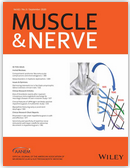 Becker’s muscular dystrophy (or BMD for Becker muscular dystrophy) is an allelic variant of Duchenne muscular dystrophy (DMD). It is due to an incomplete and genetically determined deficiency of dystrophin, a key protein in the architecture of muscle fibers. Much less common than DMD (10% of all dystrophin deficits), it is due to mutations in the DMD gene that respect the reading frame and result in a truncated but partly functional version of dystrophin. The range of phenotypes associated with BMD is very wide, ranging from forms assimilated to mild DMD to pauci-symptomatic forms. The genotype-phenotype correlations in BMD are generally more difficult to establish than in DMD.
Becker’s muscular dystrophy (or BMD for Becker muscular dystrophy) is an allelic variant of Duchenne muscular dystrophy (DMD). It is due to an incomplete and genetically determined deficiency of dystrophin, a key protein in the architecture of muscle fibers. Much less common than DMD (10% of all dystrophin deficits), it is due to mutations in the DMD gene that respect the reading frame and result in a truncated but partly functional version of dystrophin. The range of phenotypes associated with BMD is very wide, ranging from forms assimilated to mild DMD to pauci-symptomatic forms. The genotype-phenotype correlations in BMD are generally more difficult to establish than in DMD.
In an article published in June 2020, the CINRG network which brings together several neuromuscular clinical research centres around the world included eighty-three BMD patients in a natural history protocol including medical evaluations (motor, cardiac, respiratory functions). ) and biological (genotype, Western blot). This natural history is of great importance in the context of innovative therapies for DMD based on antisense oligonucleotides, which, in theory, allow a DMD phenotype to be transformed into a BMD phenotype. It is then possible to compare groups of patients benefiting from a therapeutic jump from exon 45 or 51 with a corresponding BMD group, the idea being to have a predictive tool for the expected functional improvement. Thus, in the study presented here, fifty-four individuals constituted a group comparable to DMD patients by exon 45 skip.
